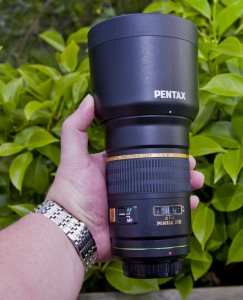Yesterday proved an interesting exercise trying to capture bees as they flew about in the lavender. I have captured a few insect pictures while in flight although they have always been somewhat of an accidental capture. Many bees are currently endangered and vital to our food supply. Experts say having bee friendly plants in your yard may help. Also the myth that bees are aggressive like wasps is untrue, they are generally gentle animals who only ever sting as a last resort for their life. So approaching them respectfully is not an issue at all.
Pentax DA* 200mm f2.8
My K-30 has a 6fps burst, not a monster for speed for such things as sports photography but more than capable for something like this. My lens choice was my DA* 200mmm f2.8, I am hoping to purchase the Pentax 100mm macro lens soon which would be ideal .however the 200mm while not giving me the close 1:1 focus, does gives me the range, is fast enough, and very sharp edge to edge allowing for some cropping
I decided to go hand held instead of on a tripod, the idea being that for these fast moving subjects I can move what was in focus with my body and be faster than if I was using the manual or auto focus.
I started with about 1/2000 of a second, but soon moved up to 1/2500 shutter speed. I bumped the ISO slightly to 320 and set my f stop down one to 3.2, with the 200mm focal length this left a pretty tight depth of field, however my idea to simply focus by moving my the camera seemed to work well.
 As I shot I began to get a feel for how to attempt to capture a moment in flight. I began by targeting the bees to the back of the bundle of lavender. This was because I knew the only way for them to fly to the next flower was towards me. I then positioned my depth of field slightly in front of the bee, so while it was on the flower it was out of focus. The hard part is guessing when it will take off as by the time you see the bee in the air, press the shutter and capture the moment, you normally only have the tail end of a bee leaving your frame. Shooting a few bursts right after allowing the bee to
As I shot I began to get a feel for how to attempt to capture a moment in flight. I began by targeting the bees to the back of the bundle of lavender. This was because I knew the only way for them to fly to the next flower was towards me. I then positioned my depth of field slightly in front of the bee, so while it was on the flower it was out of focus. The hard part is guessing when it will take off as by the time you see the bee in the air, press the shutter and capture the moment, you normally only have the tail end of a bee leaving your frame. Shooting a few bursts right after allowing the bee to  be on the flower for around 10 seconds seemed to yield some results.
be on the flower for around 10 seconds seemed to yield some results.
This was just my experience in trying to something different and I am sure there are better ways of going about it, but I found this to be a fun and relaxing experience. In total I captured a bee in flight 1 out of every 10 shots. If you enjoy the patience required for photography like this maybe give it a try.
Links:
This is the website I used to help identify some of the bees: http://bugguide.net/node/view/475348
Some more photos on my Facebook site click here








Recent Comments